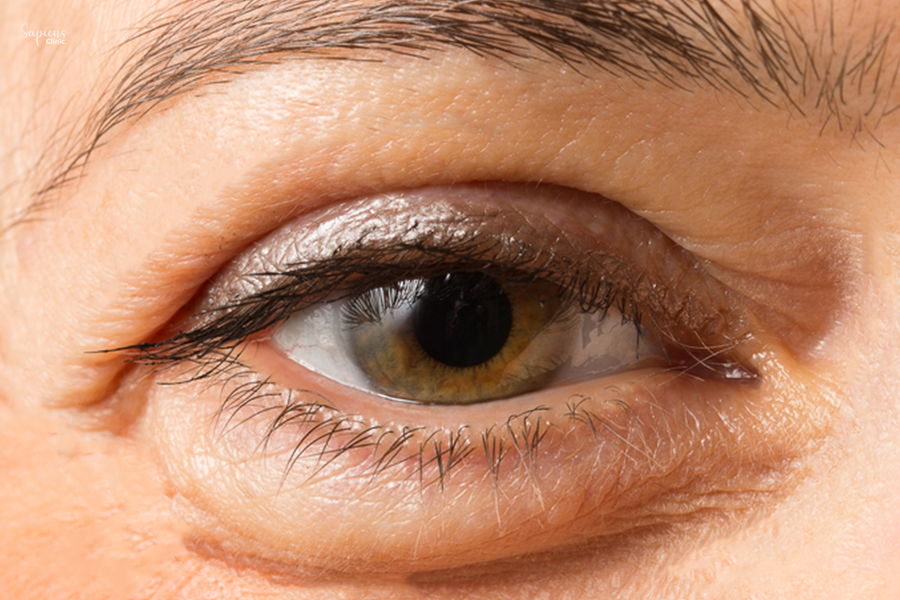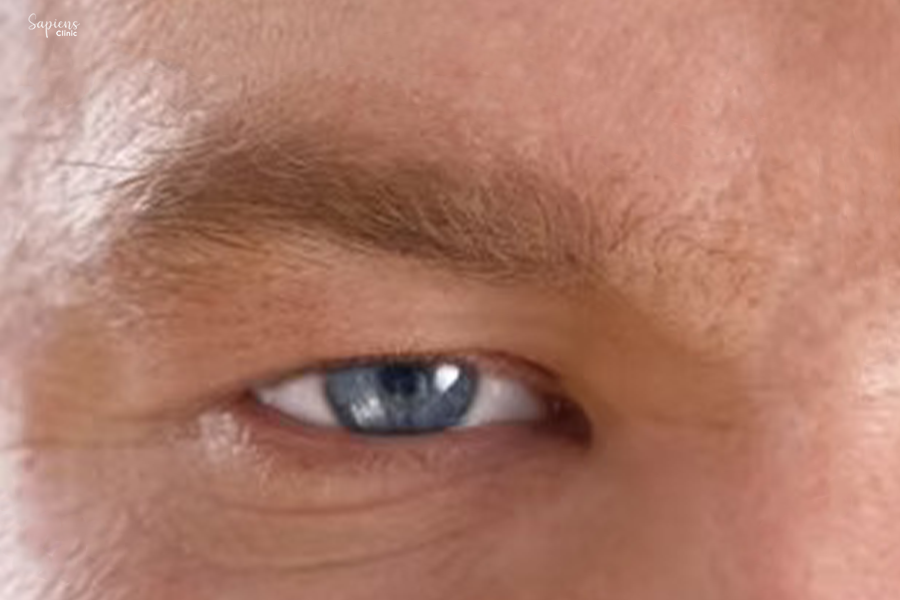Ptosis Repair for Droopy Eyelid in Malleshwaram, Bangalore
Restore Your Vision and Confidence with Expert Eyelid Correction
Ptosis – commonly referred to as a droopy eyelid – occurs when the upper eyelid falls lower than its normal position. While often a cosmetic concern, it can also interfere with vision, especially when the drooping is severe. This condition may affect one or both eyes and can be present from birth or develop over time due to aging, injury, or underlying health issues.
At Sapiens Clinic, we offer advanced surgical correction for ptosis, helping patients regain a more open-eyed appearance and improved visual clarity through precise, minimally invasive procedures.
What Is Ptosis?
Ptosis is a condition in which the upper eyelid droops over the eye. It results from weakened or stretched levator muscles – the muscles responsible for lifting the eyelid. In more severe cases, the drooping eyelid can partially or completely block your vision, forcing you to tilt your head or raise your brows to see clearly.
Ptosis may be :
- Congenital – Present at birth due to improper muscle development
- Acquired – Occurs later in life due to age, injury, nerve dysfunction, or muscle weakening
Symptoms of Ptosis
Common signs that may indicate ptosis include :
- One or both upper eyelids appear lower than usual
- Reduced or obscured field of vision
- Eye fatigue or heaviness, especially by the end of the day
- Increased tearing or eye rubbing
- Head tilting or raised eyebrows to compensate for drooping lids
- Visible asymmetry between the eyes
If your child shows signs of ptosis, early evaluation is important, as it can interfere with visual development and lead to long-term vision problems.
Causes of Ptosis
Ptosis can arise from several factors :
- Age-related weakening of eyelid muscles
- Nerve damage (e.g., from diabetes or trauma)
- Eye surgery or long-term contact lens use
- Neurological conditions like Horner syndrome, myasthenia gravis or stroke
- Eyelid tumors or inflammation
In some cases, ptosis may appear without a clear cause. Diagnosis through a comprehensive eye exam is key to identifying the reason and determining the right treatment plan.
Diagnosis and Evaluation
Diagnosis typically involves :
- Physical examination of the eyelids
- Visual field testing to measure the extent of obstruction
- Eye movement assessments
- Additional tests like the Tensilon test if a neurological cause is suspected
Treatment Options at Sapiens Clinic
Treatment depends on the severity of drooping and its impact on your vision or daily life.
1. Surgical Ptosis Repair
Surgery is the most effective treatment for moderate to severe cases. It involves tightening or shortening the levator muscle to lift the eyelid into a normal position. Two primary surgical approaches are used :
- External Approach: A skin incision is made on the eyelid crease, allowing direct access to the levator muscle, which is then tightened and reattached.
- Internal Approach (Posterior method): No external incision is made. The eyelid is flipped and the muscle is adjusted from the inside, offering a scarless outcome.
Both techniques are performed under local anesthesia with sedation and typically take less than an hour.
2. Prescription Eye Drops
For select cases of mild acquired ptosis, medicated eye drops like oxymetazoline can temporarily lift the eyelid. This is often used when surgery is not preferred or feasible.
Recovery and Aftercare
- Most patients return to daily activities within 7 to 10 days
- Bruising and swelling usually subside in 1 to 2 weeks
- Cold compresses, antibiotic ointments, and lubricating eye drops may be prescribed
- Follow-up appointments are scheduled to monitor healing and results
It’s important to avoid rubbing the eyes or heavy lifting during recovery to ensure optimal healing.
Benefits of Ptosis Repair
- Improved vision and peripheral field
- A more open, refreshed, and symmetrical appearance
- Reduced eye strain and forehead muscle fatigue
- Boost in self-confidence and facial expressiveness
Possible Risks and Complications
While ptosis surgery is generally safe and effective, potential risks include :
- Swelling or bruising
- Temporary eyelid asymmetry
- Under- or over-correction
- Incomplete eyelid closure (rare)
- Infection or scarring
These complications are rare and often correctable. Choosing an experienced surgeon greatly minimizes such risks.
Personalized Ptosis Treatment at Sapiens Clinic
If ptosis is affecting your sight or confidence, don’t wait to address it. At Sapiens Clinic, our team offers safe, effective solutions tailored to your condition – whether you need cosmetic improvement or vision restoration. With expertise in oculoplastic surgery and compassionate care, we help you see and look your best.
Book a consultation today in Malleshwaram, Bangalore, and take the next step toward brighter, clearer vision.
FAQs
1. How do I know if I need ptosis surgery?
If your droopy eyelid interferes with your vision or causes daily discomfort, surgery may be recommended.
2.Can ptosis come back after surgery?
Recurrence is uncommon but possible. In some cases, a revision surgery may be needed after several years.
3.Will the surgery leave a scar?
In external methods, the incision is hidden within the natural eyelid crease. Internal methods leave no visible scar.
4.Is ptosis always treated surgically?
Mild cases may be monitored or managed with eye drops. Surgery is typically reserved for cases affecting vision or appearance significantly.
5.Can children undergo ptosis correction?
Yes. Early treatment is crucial in children to prevent vision development issues such as lazy eye (amblyopia).

